The quintessential bee is a big, fuzzy, yellow critter. While all bees have at least some hairs, the genera below are the subset from Vermont that appear hairy. Most are relatively large.
These field marks show features that are definitive for a genus or sub-set of genera. Click the images to enlarge.
Useful fieldmarks
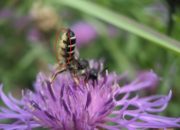
Pollen carrying hairs on abdomen
Unique to family Megachilidae (Leafcutters, Masons, Wool Carder, etc)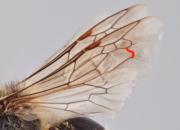
S-shaped 2nd recurrent vein
Only found on Cellophane Bees (can be tricky to see)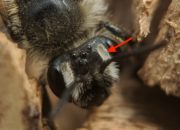
Hairy facial foveae
Only present on female Mining Bees (Andrena)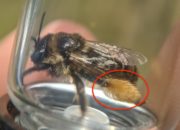
Plumose hind tibia
Unique to female long-horned bees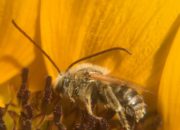
Extremely long antenna
Male long-horned bees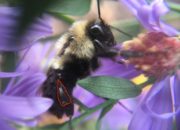
Bare corbicula on hind tibia
Unique to honey bees and non-parasitic female bumble bees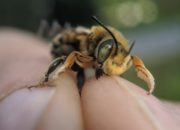
Brightly colored front legs
Distinctive to a subset of male leafcutter bees (Megachile)To identify an unknown bee, choose the most appropriate category below to narrow the options.
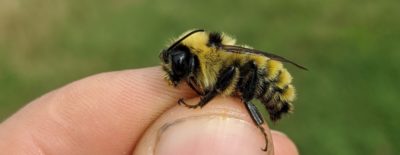
Bumble Bees (Bombus)
The best known genus of bees in Vermont. Almost always covered with thick hair, including yellow, black, and/or red. Females collect pollen only on their hind tibia.
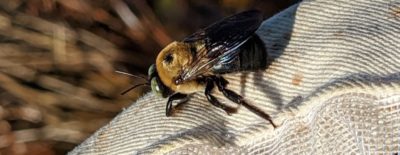
Large Carpenter Bees (Xylocopa)
Size and shape similar to a queen bumble bee. Abdomen with scattered hair and a metallic sheen. Males have massive eyes and yellow on the face. Often aggressive around nests in old barns or fence posts.
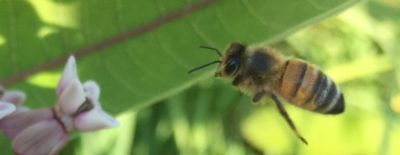
Western Honey Bee (Apis mellifera)
This domesticated species can be found in nearly all habitats in Vermont, though can only survive the winter in a managed hive. Worth learning as a reference to our native bees - medium large with a heart shape face and an orangish abdomen that often appears vaguely translucent.
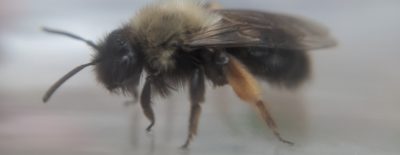
Mining Bees (Andrena)
Abundant, especially in the spring. This is the most diverse bee genera in the state, with a wide range of sizes. When visible, the hairy facial foveae of the females are distinctive.
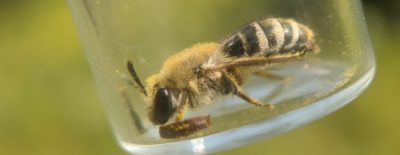
Cellophane Bees (Colletes)
Cellophane bees can be abundant in early spring and during the fall, when they are easily mistaken for a mining bee or honey bee. The heart-shaped face and details of the wing venation are diagnostic (click for details on the genus page).
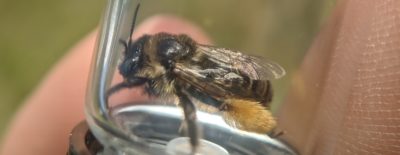
Long-horned Bees (Melissodes)
Males have exceedingly long antenna, females have extensive pollen collecting hairs on their hind tibia. Late summer through fall, most often on composites (family Asteraceae)
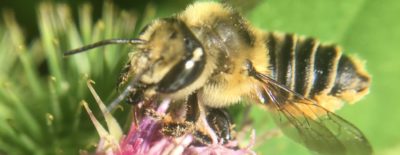
Leafcutter Bees ( Megachile)
Most have large heads and mandibles, some males have brightly colored fore-legs while females collect pollen under their abdomens.
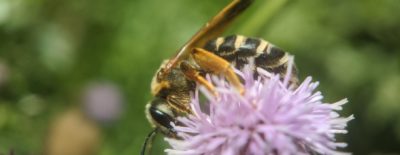
Furrow Bees (Halictus)
This genus includes some of the most common species in the state. The three larger species are somewhat hairy and have distinct white hair bands on there abdomen.
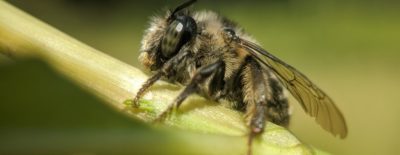
Digger Bees (Anthophora)
Two species in Vermont, including the Bumble-bee-mimic Digger Bee, which is a very convincing bee mimic. Both species can be distinguished by the wings with two submarginal cells, hind tibia with abundant hairs, and protruding clypeus.
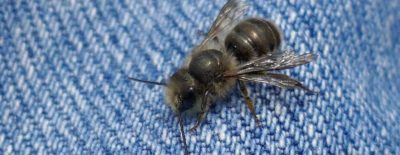
Mason Bees (Osmia)
Most mason bees in Vermont have metallic blue bodies, but several species have dark bodies and dense hair, making them superficially similar to bumble bees and other genera in this group. In particular, compare the Bufflehead Mason Bee (O. bucephala). Females carry pollen under their abdomen. Photo Credit © Doug Burnham
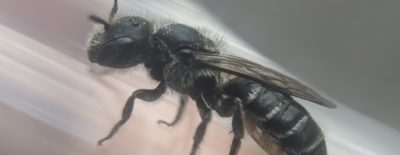
Small Mason Bees (Hoplitis)
A few rarer species in this genus are large and hairy enough to be confused with other genera in this group. Late spring to mid-summer.
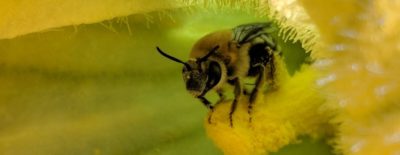
Squash Bees (Peponapis)
One species in Vermont, closely tied to winter squash, zucchini, and pumpkin flowers. Thorax tinged orange, abdomen with bold white stripes. Females have a protruding clypeus, while males have long antenna and a partially yellow clypeus. Photo Credit © Nathaniel Sharp
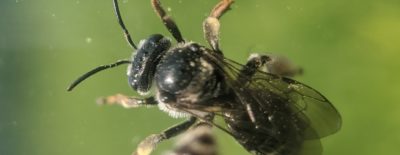
Yellow Loosestrife Bees (Macropis)
One of the rarest genera in the northeast. Only occurs near large patches of native loosestrifes (Genus Lysimachia).






